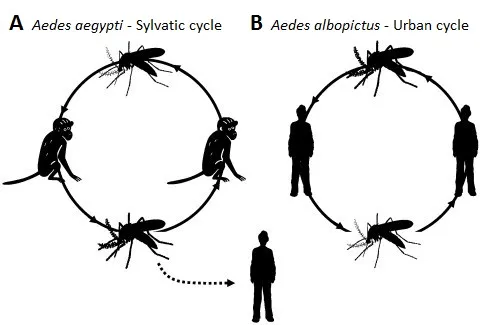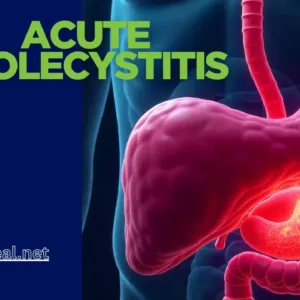Chikungunya: A Comprehensive Overview
What is Chikungunya:
Chikungunya is a viral disease caused by the chikungunya virus (CHIKV), transmitted to humans primarily through the bite of infected Aedes mosquitoes, particularly Aedes aegypti and Aedes albopictus. The name “chikungunya” is derived from a word in the Makonde language, meaning “to become contorted,” which describes the stooped appearance of sufferers with joint pain (arthralgia).
Pathogenesis:
Once the chikungunya virus enters the human body through a mosquito bite, it primarily targets epithelial and endothelial cells, fibroblasts, and macrophages. The virus binds to specific receptors on these cells, facilitating its entry. Inside the cells, the virus hijacks the host’s machinery to replicate and produce viral proteins. The immune system responds to this infection by releasing cytokines and other inflammatory mediators, which contribute to the symptoms of fever, joint pain, and rash. The virus can spread to various tissues, including muscles and joints, leading to severe inflammation and pain.
Mode of Transmission
Chikungunya is primarily transmitted through the bite of an infected Aedes mosquito. These mosquitoes are the same ones that spread dengue fever and Zika virus. They are typically found in tropical and subtropical regions, especially in areas with poor sanitation and stagnant water.
It’s important to note that chikungunya is not contagious from person to person. You cannot spread the virus by touching an infected person or their belongings.
chikungunya Causes:
Certainly! Here are the causes of chikungunya:
- Chikungunya virus (CHIKV): The disease is caused by the chikungunya virus, a single-stranded RNA virus from the Alphavirus genus and Togaviridae family.
- Mosquito Transmission: The virus is primarily transmitted to humans through the bite of infected Aedes mosquitoes, particularly Aedes aegypti and Aedes albopictus.
- Daytime Activity of Mosquitoes: Aedes mosquitoes are most active during the day, especially in the early morning and late afternoon.
- Geographical Prevalence: Chikungunya is more common in tropical and subtropical regions, including parts of Africa, Asia, and the Indian subcontinent.
- Rare Transmission Modes: In rare cases, chikungunya can be transmitted through blood transfusions, organ transplants, or from mother to child during childbirth.
Is there Chikungunya Found in United States?
Yes, chikungunya has been reported in the U.S., but it is uncommon. According to the Centers for Disease Control and Prevention, only 36 cases were recorded in the U.S. in 2021. Nearly all these cases involve individuals who traveled back to the U.S. from regions experiencing active outbreaks. These outbreaks have occurred in various parts of the world, including Africa, Asia, Europe, India, the Caribbean, the Pacific and Indian Oceans, as well as Central and South America.
Chikungunya Symptoms:
The symptoms of chikungunya usually appear 4 to 7 days after being bitten by an infected mosquito. The disease is characterized by the sudden onset of high fever, often exceeding 39°C (102°F), accompanied by severe joint pain.
Here is a detailed overview of the symptoms of chikungunya:
Symptoms of Chikungunya:
- Fever:
- Sudden Onset: Chikungunya typically begins with a sudden onset of high fever, often exceeding 39°C (102°F). The fever usually lasts for 2 to 7 days.
- Biphasic Fever: In some cases, the fever may have a biphasic pattern, meaning it comes in two waves, with a brief period of normal temperature in between.
- Severe Joint Pain (Arthralgia):
- Hallmark Symptom: Severe joint pain is the most characteristic symptom of chikungunya. The pain can be intense and debilitating, affecting multiple joints, including the wrists, ankles, knees, fingers, and toes.
- Symmetrical Pain: Joint pain is often symmetrical, affecting both sides of the body equally.
- Chronic Pain: While joint pain typically resolves within a few weeks, it can persist for months or even years in some cases, resembling rheumatoid arthritis.
- Muscle Pain (Myalgia):
- Widespread Muscle Pain: Patients often experience widespread muscle pain, contributing to the overall discomfort and fatigue associated with the disease.
- Chikungunya Skin Rash:
- Maculopapular Rash: A chikungunya rash may develop 2 to 5 days after the onset of fever. It typically appears as a maculopapular rash (red spots with small, raised bumps) and can cover the face, trunk, and limbs.
- Petechiae: In some cases, small red or purple spots (petechiae) may appear due to minor bleeding under the skin.
- Headache:
- Severe Headaches: Patients often report severe headaches, particularly in the forehead region, adding to the discomfort caused by the fever and joint pain.
- Fatigue:
- Prolonged Fatigue: Fatigue and general malaise are common, with some patients experiencing extreme tiredness that can last for weeks or months after the acute phase of the illness.
- Gastrointestinal Symptoms:
- Nausea and Vomiting: Nausea and occasional vomiting are common, especially during the initial phase of the disease.
- Loss of Appetite: A reduced appetite is often reported during the febrile phase.
- Conjunctivitis:
- Red Eyes: Some patients may develop conjunctivitis (redness and inflammation of the eyes), which can cause discomfort and light sensitivity.
- Photophobia:
- Sensitivity to Light: Sensitivity to light (photophobia) may occur, often in conjunction with headaches and conjunctivitis.
- Lymphadenopathy:
- Swollen Lymph Nodes: Swelling of lymph nodes, particularly in the neck and armpits, can occur, though it is less common.
Less Common Symptoms:
- Neurological Symptoms: In rare cases, chikungunya may lead to neurological symptoms such as confusion, seizures, or encephalitis (inflammation of the brain), particularly in vulnerable populations like newborns, the elderly, or those with pre-existing conditions.
- Cardiovascular Symptoms: Myocarditis (inflammation of the heart muscle) and other cardiovascular complications have been reported but are extremely rare.
- Hepatitis: In some instances, chikungunya can cause liver inflammation (hepatitis), leading to jaundice and other related symptoms.
Chikungunya Diagnosis:
Here is a detailed overview of the diagnosis of chikungunya:
Diagnosis of Chikungunya:
- Clinical Evaluation:
- Symptom Observation: Diagnosis begins with a clinical evaluation, where healthcare providers assess symptoms such as sudden onset of high fever, severe joint pain, muscle pain, rash, and recent travel to areas where chikungunya is prevalent.
- Differential Diagnosis: Since chikungunya symptoms can be similar to other mosquito-borne diseases like dengue and Zika, differential diagnosis is crucial. This involves ruling out other potential causes of the symptoms.
- Laboratory Tests:
- Serological Tests:
- IgM and IgG Antibodies: Detection of chikungunya-specific IgM and IgG antibodies is commonly done using enzyme-linked immunosorbent assays (ELISA). IgM antibodies are typically detectable from the fifth day of illness and may persist for several weeks.
- Timing: IgG antibodies develop later and may remain detectable for years, indicating past infection.
- RT-PCR (Real-Time Polymerase Chain Reaction):
- Viral RNA Detection: RT-PCR is used to detect the presence of chikungunya virus RNA in the blood, especially during the early stages of infection (first few days).
- Specificity and Sensitivity: This method is highly specific and sensitive, making it a reliable diagnostic tool during the acute phase of the disease.
- Viral Isolation:
- Culturing the Virus: Although less commonly used, the chikungunya virus can be isolated from blood samples in specialized laboratories. This method involves culturing the virus in cell lines to confirm its presence.
- Research and Reference: Viral isolation is generally used for research purposes or in reference laboratories rather than for routine clinical diagnosis.
- Serological Tests:
- Additional Considerations:
- Timing of Tests: The timing of sample collection is important for accurate diagnosis. Serological tests are more effective after the first week of symptoms, while RT-PCR is most effective within the first few days.
- Cross-Reactivity: Care should be taken with serological tests, as cross-reactivity with other alphaviruses can occur, potentially leading to false-positive results.
- Public Health Reporting: In endemic areas, chikungunya is often a reportable disease. Health authorities may require confirmed cases to be reported for monitoring and control efforts.
Chinkungunya Treatment:
- No Specific Antiviral Treatment:
- Symptomatic Management: Currently, there is no specific antiviral treatment available for chikungunya. The management of the disease primarily focuses on relieving symptoms and supporting the patient’s recovery.
- Pain and Fever Management:
- Nonsteroidal Anti-Inflammatory Drugs (NSAIDs): Medications such as ibuprofen, naproxen, or acetaminophen are commonly used to reduce fever and alleviate joint and muscle pain.
- Avoiding Aspirin: Aspirin should be avoided due to the risk of bleeding complications, especially if the diagnosis has not yet ruled out dengue, which can present similarly.
- Hydration:
- Fluid Intake: Patients are advised to drink plenty of fluids to prevent dehydration, which can occur due to fever and reduced fluid intake.
- Oral Rehydration Solutions: In some cases, oral rehydration solutions (ORS) may be recommended to help maintain electrolyte balance.
- Rest and Recovery:
- Adequate Rest: Rest is crucial during the acute phase of the disease to allow the body to recover and manage the symptoms of fatigue and weakness.
- Avoiding Strain on Joints: Since joint pain can be severe, patients should avoid activities that put additional strain on affected joints.
- Long-Term Joint Pain Management:
- Physical Therapy: For patients who experience prolonged joint pain (chronic arthralgia), physical therapy may be recommended to improve joint function, reduce stiffness, and prevent long-term disability.
- Analgesics: Long-term pain relief may involve the use of analgesics or corticosteroids under medical supervision, particularly in cases where pain persists for months.
- Monitoring and Follow-Up:
- Regular Check-Ups: Follow-up appointments may be necessary to monitor the patient’s recovery, especially if symptoms persist or worsen.
- Managing Complications: In rare cases, chikungunya can lead to complications such as myocarditis, hepatitis, or neurological issues. These require specialized care and treatment.
- Alternative and Complementary Therapies:
- Herbal Remedies: Some patients may explore herbal or alternative remedies to manage symptoms. However, it is important to consult with healthcare providers before starting any alternative treatments to ensure they do not interfere with conventional care.
- Acupuncture and Massage: These therapies may be used to help relieve chronic joint pain, though evidence of their efficacy in chikungunya is limited.
Chikungunya Prevention:
Prevention of chikungunya centers around avoiding mosquito bites and controlling mosquito populations. Key preventive measures include:
- Use of Mosquito Repellents: Apply repellents containing DEET, picaridin, or oil of lemon eucalyptus to exposed skin.
- Protective Clothing: Wear long-sleeved shirts and long pants, especially during peak mosquito activity times.
- Mosquito Control: Eliminate standing water around homes where mosquitoes breed, use insecticide-treated bed nets, and install screens on windows and doors to prevent mosquitoes from entering.
- Community Awareness: Public health campaigns can educate communities about the importance of mosquito control and personal protection measures.
Chikingunya Complications
Chikungunya is a viral disease transmitted by mosquitoes, and while most people recover fully, the infection can lead to several complications, especially in vulnerable populations like the elderly, infants, and those with pre-existing health conditions. Here are some of the potential complications of chikungunya:
1. Chronic Joint Pain and Arthritis
- Persistent Joint Pain: Even after the acute phase of the illness, many patients experience prolonged joint pain, which can last for months or even years. This chronic arthritis can be debilitating and impact the quality of life.
- Joint Swelling and Stiffness: Some patients may develop chronic arthritis, characterized by swelling and stiffness in the joints.
2. Neurological Complications
- Encephalitis: Inflammation of the brain can occur, leading to symptoms like confusion, seizures, and altered consciousness. This is more common in infants, elderly individuals, and those with compromised immune systems.
- Meningitis: Inflammation of the membranes surrounding the brain and spinal cord can occur, leading to headaches, neck stiffness, and sensitivity to light.
- Guillain-Barré Syndrome (GBS): This is a rare condition where the immune system attacks the nerves, leading to muscle weakness and paralysis.
3. Cardiovascular Complications
- Myocarditis: Inflammation of the heart muscle, which can lead to chest pain, heart failure, and arrhythmias (irregular heartbeats).
- Pericarditis: Inflammation of the sac surrounding the heart, causing chest pain and other cardiac symptoms.
4. Ocular Complications
- Uveitis: Inflammation of the uvea (the middle layer of the eye) can cause redness, pain, and vision changes.
- Retinitis: Inflammation of the retina, which can affect vision.
5. Hepatitis
- Liver Inflammation: Some patients may develop hepatitis, leading to elevated liver enzymes, jaundice (yellowing of the skin and eyes), and abdominal pain.
6. Skin Complications
- Hyperpigmentation: Persistent darkening of the skin can occur after the rash associated with chikungunya.
- Skin Lesions: In some cases, skin ulcers or other lesions may develop.
7. Complications in Pregnant Women
- Neonatal Chikungunya: If a pregnant woman contracts chikungunya, especially in the late stages of pregnancy, the virus can be transmitted to the newborn, leading to severe neonatal illness.
- Preterm Birth: The infection may increase the risk of preterm delivery.
8. Complications in Immunocompromised Individuals
- People with weakened immune systems (e.g., due to HIV/AIDS, cancer, or immunosuppressive medications) may experience more severe and prolonged illness, with a higher risk of complications.
9. Mental Health Issues
- Depression and Anxiety: The chronic pain and fatigue associated with chikungunya can lead to mental health challenges like depression and anxiety.
10. Mortality
- While chikungunya is rarely fatal, severe complications, particularly in vulnerable populations, can lead to death.
These complications highlight the importance of early diagnosis, supportive care, and preventive measures, such as avoiding mosquito bites in areas where chikungunya is endemic.
Chikungunya Vaccine
Researchers from The University of Texas Medical Branch at Galveston have made vaccine for chikungunya fever made from an insect specific virus without any effect on people. Moreover vaccine safe and effective. The vaccine was injected to mice and nonhuman primates from disease when exposed to the chikungunya virus which result in strong immune defense and give complete protection.
The antibodies demonstrated full protection against chikungunya in two separate mouse models. In nonhuman primates, the Eilat/Chikungunya vaccine triggered a swift and strong immune response, with no detectable virus in the bloodstream and no signs of illness, such as fever, following infection with the chikungunya virus.
Conclusion:
Chikungunya is a significant public health concern in many parts of the world, particularly in tropical and subtropical regions. While the disease is rarely fatal, its symptoms can be severe and debilitating. Early diagnosis, supportive treatment, and preventive measures are essential to managing and controlling the spread of chikungunya. Ongoing research is focused on developing vaccines and antiviral therapies to combat this challenging disease.
FAQs
Chikungunya is it contagious?
It is not directly contagious between people. It spreads through the bite of infected mosquitoes, primarily Aedes aegypti and Aedes albopictus.
What are the Difference between dengue fever vs chikungunya?
Dengue causes high fever, severe headache, muscle pain, and low platelet count, with the risk of bleeding. Chikungunya causes high fever and intense joint pain, often lasting months. Both are spread by Aedes mosquitoes, but dengue can be more life-threatening.
What are the preventions of chikungunya?
To prevent chikungunya, avoid mosquito bites by using insect repellent, wearing protective clothing, using mosquito nets, and eliminating standing water where mosquitoes breed.
What is chikungunya diagnostic test?
Its diagnostic tests are used to confirm the presence of the chikungunya virus in a person's body. Here are the most common methods: Blood tests: Enzyme-linked immunosorbent assay (ELISA): Detects antibodies to the chikungunya virus in the blood. Polymerase chain reaction (PCR): Detects the genetic material (RNA) of the chikungunya virus in the blood. Rapid diagnostic tests: These are point-of-care tests that can provide results within minutes. They are often used in areas with limited laboratory facilities. It's important to consult with a healthcare professional for a proper diagnosis if you suspect you have chikungunya.
How Chikungunya joint pain can be relief?
Chikungunya joint pain relief: Rest: Avoid strenuous activity. Over-the-counter pain relievers: Medications like acetaminophen or ibuprofen can help manage pain and fever. Hot or cold therapy: Applying heat or cold to the affected joints can provide relief. Physical therapy: Exercises can help improve joint function and reduce pain. Consult a doctor for severe pain or persistent symptoms.
Disclaimer: This information provides a general overview of diagnosis, treatment, and medication related to alopecia areata. It is intended to assist in understanding potential options but is not comprehensive. This content is not a substitute for professional medical advice, diagnosis, or treatment. It does not cover all possible conditions, treatments, side effects, or risks specific to individual cases. For personalized medical advice, please consult a healthcare provider who can evaluate your unique circumstances. This information does not endorse or validate any specific treatments or medications.





